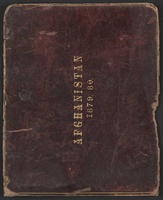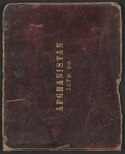Benjamin Simpson
| Benjamin Simpson | |
|---|---|
| Narození | 31. března 1831 |
| Úmrtí | 27. června 1923 (ve věku 92 let) |
| Povolání | fotograf a chirurg |
| Některá data mohou pocházet z datové položky. Chybí svobodný obrázek. | |
Sir Benjamin Simpson KCIE (31. března 1831 – 27. června 1923) byl britský chirurg a fotograf, který sloužil v indické lékařské službě Bengálsko od roku 1853 do roku 1890 [1] Jeho fotografie Kandaháru z konce 19. století[2] Quetta, Bombay, hrobky Amheda Šáha, Baba Wali Kotal, Idgah Gate, Durani, Chilzina, Tukatoo a Kirka Sharif byly shromážděny v albech. Vzhledem k tomu, že fotografie byly seskupeny s fotografiemi Johna Burkeho a dalších, nelze mnohým připsat jednoznačné autorství.
Životopis
Simpson byl členem Bengálské fotografické společnosti a vytvořil 80 fotografií seskupených jako Rasové typy severní Indie, které vystavil na Londýnské mezinárodní výstavě v roce 1862 a získal zlatou medaili. Navštívil také Assam v roce 1867 a 1868 produkující ilustrace pro deskriptivní etnologii Bengálska publikovanou v roce 1872. Jeho fotografie byly také použity v osmidílné sérii The People of India publikované v letech 1868–1875. Simpson také fotografoval scény během druhé afghánské války v letech 1879–1880 v Kandaháru v Afghánistánu. Vydalo je nakladatelství Bourne & Shepherd. [1]
Dne 15. února 1887 byl v první skupině lidí jmenován rytířským velitelem Řádu indické říše (KCIE).[3]
Galerie
- Chilzina, Kandahár, asi 1881
- Courtyard of Wali Sher Ali, 1881
- Zříceniny citadely ve Starém Kandaháru, 1881
- Afghanistan, album s fotografiemi Simpsona, Johna Burkeho a dalších
- Nepál
- Kandahár
- Nepál
Odkazy
Reference
V tomto článku byl použit překlad textu z článku Benjamin Simpson na anglické Wikipedii.
- ↑ a b Benjamin Simpson Luminous Lint
- ↑ SIMPSON, Benjamin. British Occupation of Kandahār Album [online]. 1881 [cit. 2020-11-14]. Dostupné online. (anglicky)
- ↑ Sir Benjamin Simpson, K.c.i.e. British Medical Journal. 1923, s. 48. DOI 10.1136/bmj.2.3262.48. (anglicky)
Související články
Externí odkazy
 Obrázky, zvuky či videa k tématu Benjamin Simpson na Wikimedia Commons
Obrázky, zvuky či videa k tématu Benjamin Simpson na Wikimedia Commons
Média použitá na této stránce
Chilzina or the 40 Steps [Kandahar].
Photograph of Chilzina in Kandahar from the 'Bellew Collection: Photograph album of Surgeon-General Henry Walter Bellew' taken by Sir Benjamin Simpson c.1881. Kandahar is the second largest city in Afghanistan and is situated in the south of the region. Chilzina is a rock-cut chamber on the northern side of the old citadel and is accessed by forty steps. A Persian incription at the site reveals that the chamber was completed under the patronage of the Moghul Emperor Babur in the 16th century. The old citadel was destroyed by Nadir Shah Afshar of Persia in 1738.An eight-member group of Hazaras in the courtyard of a government palace (known then as Wali Sher Ali Khan's Zenana) in Kandahar, Afghanistan.
Ruins of old Kandahar Citadel.
Photograph of the ruins of old Kandahar citadel from the 'Bellew Collection: Photograph album of Surgeon-General Henry Walter Bellew' taken by Sir Benjamin Simpson c.1881. Kandahar is the second largest city in Afghanistan and is situated in the south of the region. Although the old citadel was destroyed by Nadir Shah Afshar of Persia in 1738, the Battle of Maiwand was fought in its ruins in 1880. This conflict secured the rule of Abdur Rahman as the Amir of Afghanistan (1844-1901). At the top of this fortified citadel there are the ruins of a royal residence."Courtyard of Wali Shere Ali's zenana [Kandahar].
Photograph of the courtyard of Wali Shere Ali's Zenana in Kandahar from the 'Bellew Collection: Photograph album of Surgeon-General Henry Walter Bellew' taken by Sir Benjamin Simpson in c.1881. Kandahar is the second largest city in Afghanistan and is situated in the south of the region. Sher Ali, son of Dost Mahommed, was the Amir of Afghanistan from 1863 to 1879. This view shows the women's quarters or zenana in a royal residence at Kandahar. It is a two-storey structure organised around an open courtyard with a pool in the centre.""This photograph of 24 medical officers of the Southern Afghanistan Field Force in Kandahar is from an album of rare historical photographs depicting people and places associated with the Second Anglo-Afghan War. It is estimated that at least 30 surgeon officers accompanied the field force in 1880 in the fighting that culminated at the Battle of Kandahar."
Autor: Rijksmuseum, Licence: CC0
Identificatie
Titel(s): Portret van een Limbu vrouw uit Nepal. Limboo female. Aboriginal - trans-Himalayan. Nipal (titel op object)
Objecttype: foto bladzijde
Objectnummer: RP-F-2001-7-1122. B-7
Opschriften / Merken: nummer, recto, gedrukt: ‘(62)’
Vervaardiging
Vervaardiger: fotograaf: Benjamin Simpson (mogelijk)
Plaats vervaardiging: Nepal
Datering: ca. 1858 - in of voor 1868
Materiaal: fotopapier
Techniek: albuminedruk
Afmetingen: foto: h 158 mm × b 120 mm
Onderwerp
Wat: menselijke rassen; mensen; nationaliteiten
Verwerving en rechten
Credit line: Aankoop met steun van de Mondriaan Stichting, het Prins Bernhard Cultuurfonds, het VSBfonds, het Paul Huf Fonds/Rijksmuseum Fonds en het Egbert Kunstfonds
Verwerving: aankoop 2001
Copyright: Publiek domein
Autor: Rijksmuseum, Licence: CC0
Identificatie
Titel(s): Drie Newar mannen uit Nepal zittend op de grond, Newar group. Slave population. Supposed aboriginal. Nipal (titel op object)
Objecttype: foto bladzijde
Objectnummer: RP-F-2001-7-1122B-18
Opschriften / Merken: nummer, recto, gedrukt: ‘(73)’
Vervaardiging
Vervaardiger: fotograaf: Benjamin Simpson (mogelijk)
Plaats vervaardiging: Nepal
Datering: ca. 1858 - in of voor 1868
Materiaal: fotopapier
Techniek: albuminedruk
Afmetingen: foto: h 139 mm × b 197 mm
Onderwerp
Wat: menselijke rassen; mensen; nationaliteiten, kitchen-utensils: pot
Verwerving en rechten
Credit line: Aankoop met steun van de Mondriaan Stichting, het Prins Bernhard Cultuurfonds, het VSBfonds, het Paul Huf Fonds/Rijksmuseum Fonds en het Egbert Kunstfonds
Verwerving: aankoop 2001
Copyright: Publiek domein
Afghanistan, 1879-80 is an album of rare historical photographs depicting people and places associated with the Second Anglo-Afghan War (1878–80). The war began in November 1878 when Great Britain, fearful of what it saw as growing Russian influence in Afghanistan, invaded the country from British India. The first phase of the war ended in May 1879 with the Treaty of Gandamak, which permitted the Afghans to maintain internal sovereignty but forced them to cede control over their foreign policy to the British. Fighting resumed in September 1879 after an anti-British uprising in Kabul, and finally concluded in September 1880 with the decisive Battle of Kandahar. The album <a name="_GoBack"></a>includes portraits of British and Afghan leaders and military personnel; portraits of ordinary Afghan people; depictions of British military camps and activities; and Afghan structures, landscapes, and cities and towns. The sites shown are all located within the borders of present-day Afghanistan or Pakistan (a part of British India at the time). About a third of the photographs were taken by John Burke (circa 1843–1900), another third by Sir Benjamin Simpson (1831–1923), and the remainder by several other photographers. Some of the photographs are unattributed. The album possibly was compiled by a member of the British Indian government, but this has not been confirmed. How it came to the Library of Congress is not known.
Afghan Wars; Cities and towns; Forts and fortifications; Government officials; Great Britain. Army; India. Army; Military camps; Military officers; Pushtuns; Sikhs; Soldiers; Street scenes















